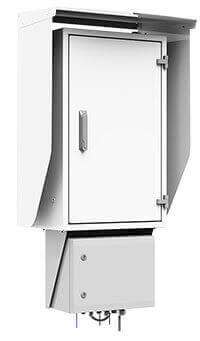Vaisala, a global leader in environmental and industrial measurement, has studied recently released data by CIGRE – the international council on large electric systems – to reveal the most significant risks of transformer failure and the leading causes of downtime. CIGRE data shows that almost 50% of failures resulting in downtime originate in transformer windings, with tap changers accounting for a further 23%.

The duration of an outage caused by a failure varies significantly, lasting anything from a few hours to several years, depending on the type and severity of the failure. Vaisala’s Optimus DGA Monitor for Transformers solves many current problems in transformer maintenance.
Dealing with each of these immediate causes of failure carries costs that range from repair to refurbishment that could cost up to 70% of replacement, on top of the roughly €100,000 of lost output for every 15 minutes’ downtime, to the several million-euro price tag of a new transformer — or even tenfold higher if a transformer explosion causes collateral damages to surrounding substation infrastructure and other high voltage equipment.
“The industry has been well aware of the significant costs involved in transformer failure for quite some time – both in terms of damage to the asset itself and the resulting loss in revenues,” said Senja Leivo, Senior Industry Expert at Vaisala. “However our analysis of CIGRE’s failure statistics demonstrates how, with diligent monitoring and maintenance schemes, teams can avoid many failures in the fleet.
“Looking more closely reveals the individual factors that contribute most to failures – insulation deterioration, design and manufacturing and improper maintenance & repair,” Leivo added. “In light of the research data, it’s all the more important for asset owners to make use of online monitoring methodologies as part of their asset management strategies to identify and tackle these issues as they arise – and before they have a chance to cause thousands, if not millions, of Euro’s worth of damage.”
According to data collected by CIGRE, design and manufacturing account for 20% of all causes leading to transformer failures. Other frequent faults leading to failures include insulation aging and deterioration (15%), and improper maintenance and repair (10%). In light of these findings, Vaisala has stressed the importance of online condition monitoring as the best way to support proper transformer maintenance schemes.
A significant portion of faults that lead to transformer failures are foreseeable and predictable. This means they can be prevented, or at the very least their effects mitigated, provided the right methodologies and equipment are used as part of a conscientious maintenance program. Faults can only be prevented or remedied if they are recognized, and while regular monitoring through site visits and scheduled oil sampling will identify around half of all potential faults before they develop into a critical problem, online monitoring, which continuously gathers transformer data, will spot 90% of faults early.
Despite the high cost of downtime, and the long lead times of replacement transformers, to date there has been little focus on identifying the most pernicious primary and secondary causes that underlie faults and failings.
Typically, for a fleet of 1,000 transformers, five will fail in any given year, while a further 100 will generate abnormal gas levels due to developing faults or spots of high temperature. To take preventative action, and cut the number of failures and faults in half, Vaisala recommends the use of advanced online dissolved gas analysis (DGA) methods, such as its Optimus DGA monitor.
Not only do these methodologies allow for more accurate review and optimization of transformer assets, but, based on these, the data gathered further allow plant owners and operators to make better informed decisions when it comes to scheduling future maintenance and replacements. In turn, this can result in long-term savings and a decreased risk of catastrophic failure.
The Optimus, for instance, uses vacuum gas extraction to provide a fully representative analysis of all dissolved fault gases present in a transformer’s oil. The resulting data are available via an online interface, giving continuous, real-time analysis of a transformer’s condition – and reducing the likelihood of unforeseen faults developing to the point of costly repair or failure..
Filed Under: News, Projects, Transformers




